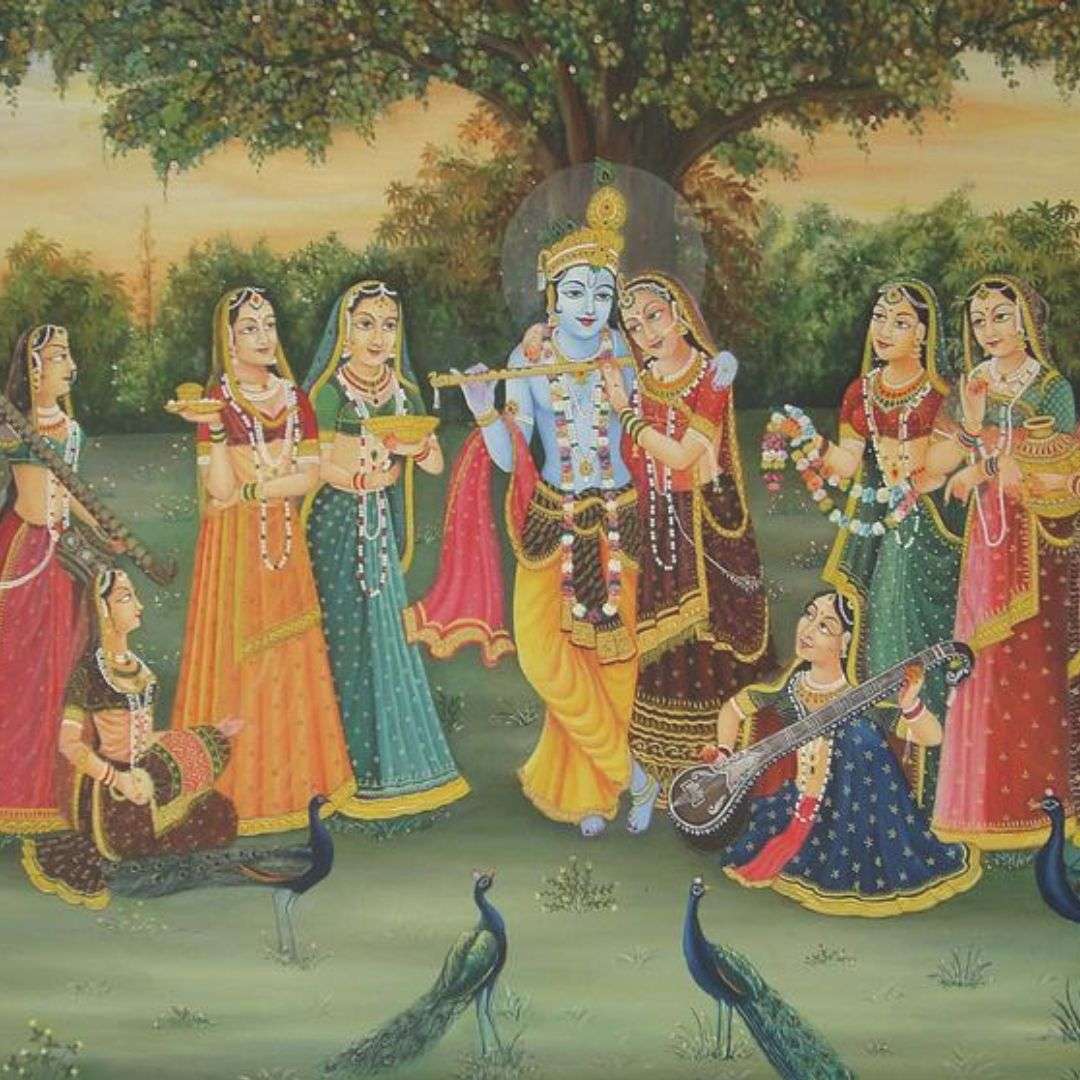
Bhagwan Krishna’s Raas Leela is not just a dance; it is a cosmic expression of love, devotion, and spiritual enlightenment. But have you ever wondered what makes this celestial dance so special? Why is it considered one of the most divine acts in Hindu mythology? Chalo, let’s dive into the deeper meaning of this enchanting leela and uncover the spiritual wisdom hidden within.
What is Raas Leela?
Raas Leela, performed by Bhagwan Krishna with the Gopis of Vrindavan, is an eternal dance of divine love. Taking place under the full moon on the banks of the Yamuna, this celestial dance is said to be so enchanting that time itself stood still. It symbolizes the ultimate union of the soul (aatma) with the supreme (Parmatma), where love transcends the physical and becomes purely spiritual.
More Than Just a Dance – The Spiritual Essence
At first glance, Raas Leela might seem like a beautiful dance between Krishna and the Gopis. But its meaning runs far deeper. It represents:
✅ Pure Bhakti (Devotion): The Gopis symbolize the devotee’s longing for Bhagwan Krishna. Their love is selfless, free from any worldly desires.
✅ Ego Dissolution: In the Raas, Krishna multiplies himself so that every Gopi feels his divine presence. This signifies that Bhagwan resides within all of us, but only when we let go of our ego can we truly experience his presence.
✅ The Infinite Nature of Divine Love: Unlike worldly love, which often comes with conditions, Krishna’s love in Raas Leela is limitless, eternal, and divine.
Why Did Krishna Perform Raas Leela Only with the Gopis?
A question that often arises is: why did Krishna choose the Gopis for this divine dance? The answer lies in their unparalleled devotion. They had surrendered their entire being to Krishna, seeking nothing in return. Their love was not bound by societal norms but was an expression of the soul’s deepest yearning for the divine.
This is a beautiful lesson for all of us—true devotion goes beyond rituals and traditions. It is about surrendering oneself completely to Bhagwan, just like the Gopis did.
Raas Leela & The Journey of the Soul
The Raas Leela is not just a story; it’s an allegory of the spiritual journey. Each one of us is a Gopi, wandering in the material world, searching for happiness. But real happiness lies in uniting with the divine.
Krishna’s flute symbolizes the call of the divine, inviting us to leave behind our material attachments and immerse ourselves in his divine love. Are we listening to his call, or are we still caught up in worldly distractions?
How Can We Experience the Essence of Raas Leela Today?
Even though Raas Leela happened thousands of years ago, its essence is still relevant. Here’s how we can connect with its deeper meaning in our daily lives:
🕉 Through Bhakti (Devotion): Chanting Krishna’s name, reading his leelas, and practicing pure love for Bhagwan without expecting anything in return.
🕉 Through Meditation: Just as the Gopis were lost in Krishna’s love, we too can lose ourselves in meditation, experiencing divine bliss.
🕉 Through Selfless Love: Loving others without expectations, just like Krishna showered his love on every Gopi equally.
Final Thoughts
Raas Leela is more than a story; it is a divine philosophy of love, devotion, and spiritual transcendence. Bhagwan Krishna’s leela teaches us that true love is beyond physical attraction—it is a sacred connection between the soul and the divine.
So, are you ready to embrace the divine dance within you? Are you willing to let go of your ego and become one with the eternal love of Krishna?
Jai Shri Krishna!
If the teachings of Bhagwan Krishna inspire you, take your first step towards spirituality and dharma with DeepRoots Online Shloka Classes. Learn the meanings and significance of sacred shlokas and connect deeply with your spiritual path. Join now at DeepRoots Online Shloka Classes and begin your journey towards inner peace and devotion!



















